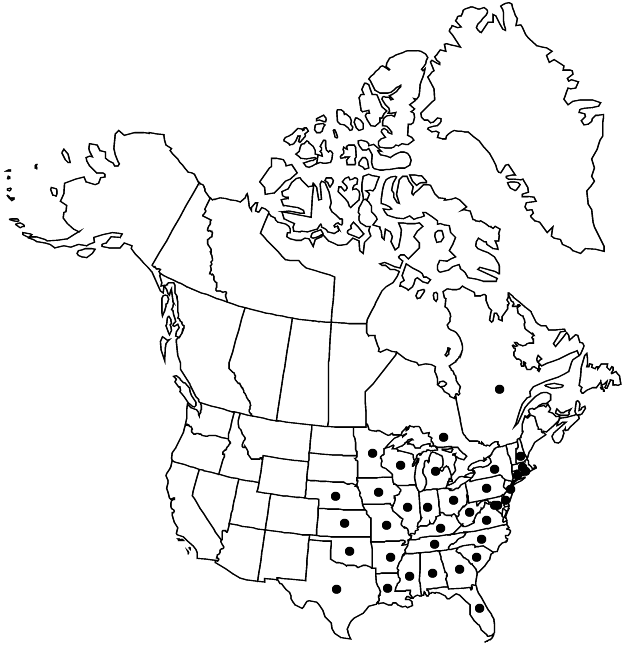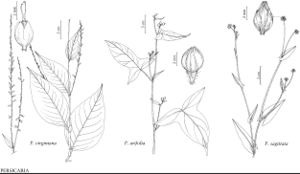Difference between revisions of "Persicaria virginiana"
Fruct. Sem. Pl. 2: 180. 1790.
imported>Volume Importer |
imported>Volume Importer |
||
| Line 65: | Line 65: | ||
|publication year=1790 | |publication year=1790 | ||
|special status=Illustrated | |special status=Illustrated | ||
| − | |source xml=https:// | + | |source xml=https://bitbucket.org/aafc-mbb/fna-data-curation/src/2e0870ddd59836b60bcf96646a41e87ea5a5943a/coarse_grained_fna_xml/V5/V5_1177.xml |
|subfamily=Polygonaceae subfam. Polygonoideae | |subfamily=Polygonaceae subfam. Polygonoideae | ||
|genus=Persicaria | |genus=Persicaria | ||
Latest revision as of 22:08, 5 November 2020
Plants perennial, 4.5–6(–13) dm; rhizomatous. Stems ribbed, glabrous or strigose. Leaves: ocrea brownish hyaline, cylindric, 10–20 mm, base inflated or not, margins truncate, ciliate with bristles 0.5–4 mm, surface strigose to tomentose; petiole (0.1–)1–2 cm, leaves sometimes sessile; blade 5–17.5 × 2–10 cm, apex acute to acuminate, faces pubescent abaxially, strigose and scabrous adaxially. Inflorescences (50–)100–350 × 7–15 mm; peduncle 10–70 mm, pubescent or glabrous distally; ocreolae not overlapping, margins ciliate with bristles to 3 mm. Pedicels ascending to spreading, 0.5–1 mm. Flowers 1–3 per ocreate fascicle; perianth white, greenish white, or rarely pink, glabrous, accrescent; tepals elliptic to obovate, 2.5–3.5 mm, apex acute to acuminate; filaments distinct, outer ones sometimes adnate to perianth tube; anthers yellow or pink, ovate; styles distinct. Achenes included except for apex and styles, brown to dark brown, biconvex, 3.5–4 × 2–2.8 mm, dull to shiny, smooth to rugose. 2n = 44.
Phenology: Flowering Jul–Oct.
Habitat: Rich deciduous forests, floodplain forests, dry woodlands, thickets
Elevation: 0-500 m
Distribution

Ont., Que., Ala., Ark., Conn., Del., D.C., Fla., Ga., Ill., Ind., Iowa, Kans., Ky., La., Md., Mass., Mich., Minn., Miss., Mo., Nebr., N.H., N.J., N.Y., N.C., Ohio, Okla., Pa., R.I., S.C., Tenn., Tex., Va., W.Va., Wis., c Mexico.
Discussion
Tension in the articulation of the pedicels is sufficient to throw mature achenes 3–4 m when the inflorescence is bumped, and the persistent, hooked styles aid in the dispersal of achenes in the fur of animals (H. S. Reed and I. Smoot 1906). A hot infusion of leaves with bark of honey-locust (Gleditsia triacanthos Linnaeus) was used by the Cherokee to treat whooping cough (D. E. Moerman 1998).
Selected References
None.
